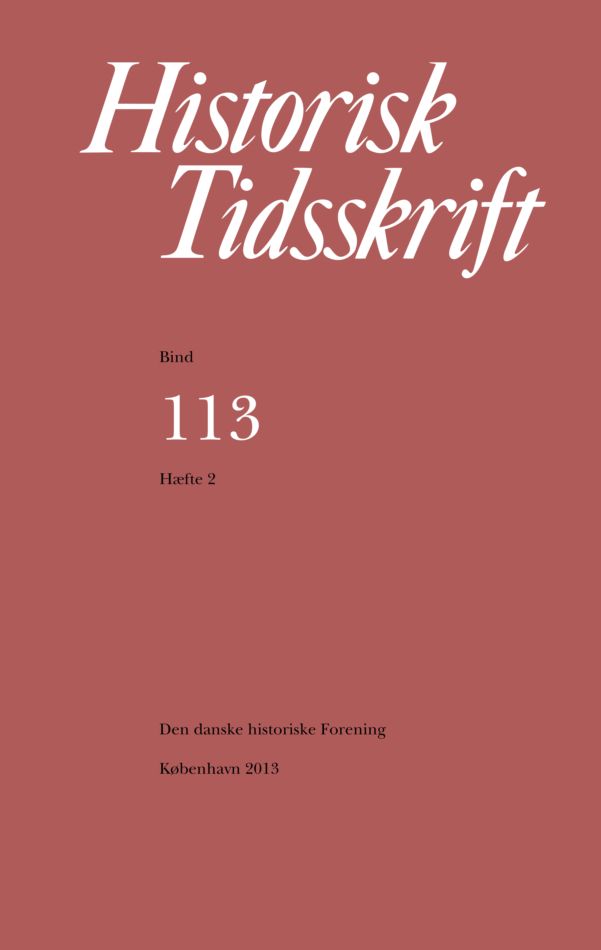Tvangslånene. Om fiskale forhold i Slesvig under og efter Treårskrigen
Resumé
The Compulsory Loans. On Fiscal Conditions in the Duchy of Schleswig during and after the First Schleswig War
During the First Schleswig War (1848-51), the governorship instated by the Schleswig-Holstein insurgents who demanded secession from the Danish crown, levied three compulsory loans upon the districts of the region. However, only the two first were actually collected as the final one was decided just a few months before the end of the war. The compulsory loans were a war tax, with the parti cular characteristic though, that in principle those citizens who contributed enjoyed status as creditors. Eventually, the money would be paid back, fully and with interest. The purpose of the first loan, imposed May 1849, was the creation of funds for provisioning the pan-German troops that assisted the Duchies in their war against the Kingdom of Denmark. The collection of the requested amounts took place by each district issuing interest-bearing loan certificates to citizens in exchange for cash. They passed the yield on to the Schleswig-Holstein treasury that in its turn issued bonds to the district authorities. The second loan was raised in April 1850 with the purpose of covering the deficit created by the swelling war expenditure. The procedure was the same as in the previous case. The present study shows that in the Duchy of Schleswig all strata of the population were involved in paying: small savings bank depositors no less than people of more substantial wealth. Some would do so on a voluntary basis or after some persuasion, seeing it as a civil duty and/or a sensible investment. On a number of occasions though, especially in the northern districts where pro-Danish sentiments prevailed, local residents would only pay up after threats by central authorities to take possession by military execution. In some instances, this measure was actually carried into effect. After the war, the Danish regime, reinstated after making peace with the German powers and defeating the insurgents, refused to acknowledge the validity of the compulsory loans. In other words, the state was entirely unwilling to underwrite the debt incurred to local units by the former rulers of the territory. At the same time, district authorities, according to legal arrangements made when the loans were raised, were not justified in, let alone obliged to, reimburse the money raised from local citizens on behalf of the – at the time – legitimate holder of sovereign government power. The judicial system refused on principle to deal with any matter regarding the compulsory loans. However, over the period between the two Schleswig Wars, the assembly of the estates of the Duchy of Schleswig became the forum of encompassing debates on reimbursement. A number of individuals, groups and incorporated units, all of them among the contributors, endeavoured through the agency of the Assembly to persuade the Danish government to recognize the loans as municipal debt, thus permitting repayment. A few concessions were made, but a general solution was not reached until the 1870s when the Prussian state, of which the Duchies now formed part, covered a portion of the great loss many Schleswig districts had suffered on account of the compulsory loans.
Downloads
Publiceret
Citation/Eksport
Nummer
Sektion
Licens
Ophavsret til bidrag i Historisk Tidsskrift tilhører forfatterne og Den danske historiske Forening som udgiver af Historisk Tidsskrift. For illustrationer gælder den ophavsret, som står anført i billedteksten. Ophavsretslovens almindelige bestemmelser gælder, hvilket vil sige, at ophavsretten gælder i 70 år efter forfatterens død. Bidrag i Historisk Tidsskrift må derfor, med forbehold for en ”moving wall” på tre år, frit downloades, læses, gemmes, anvendes og citeres (med kildeangivelse) i privat og videnskabelig sammenhæng, men de må ikke helt eller delvis genudgives af tredjepart, heller ikke i redigeret form, uden tilladelse fra forfatterne og Den danske historiske Forening. Henvendelse skal i så fald rettes til Historisk Tidsskrifts redaktion på histtid@hum.ku.dk.





